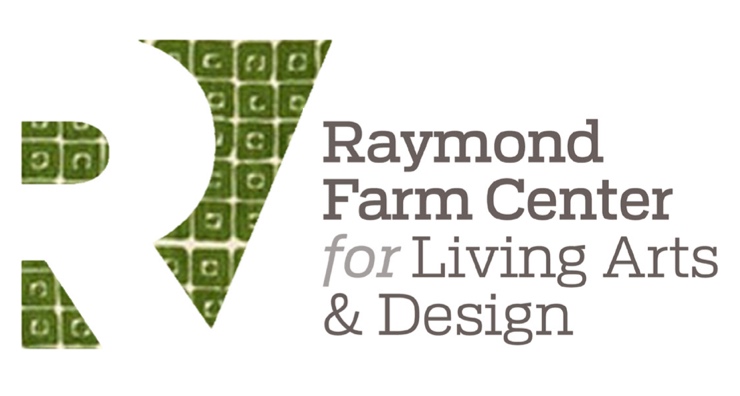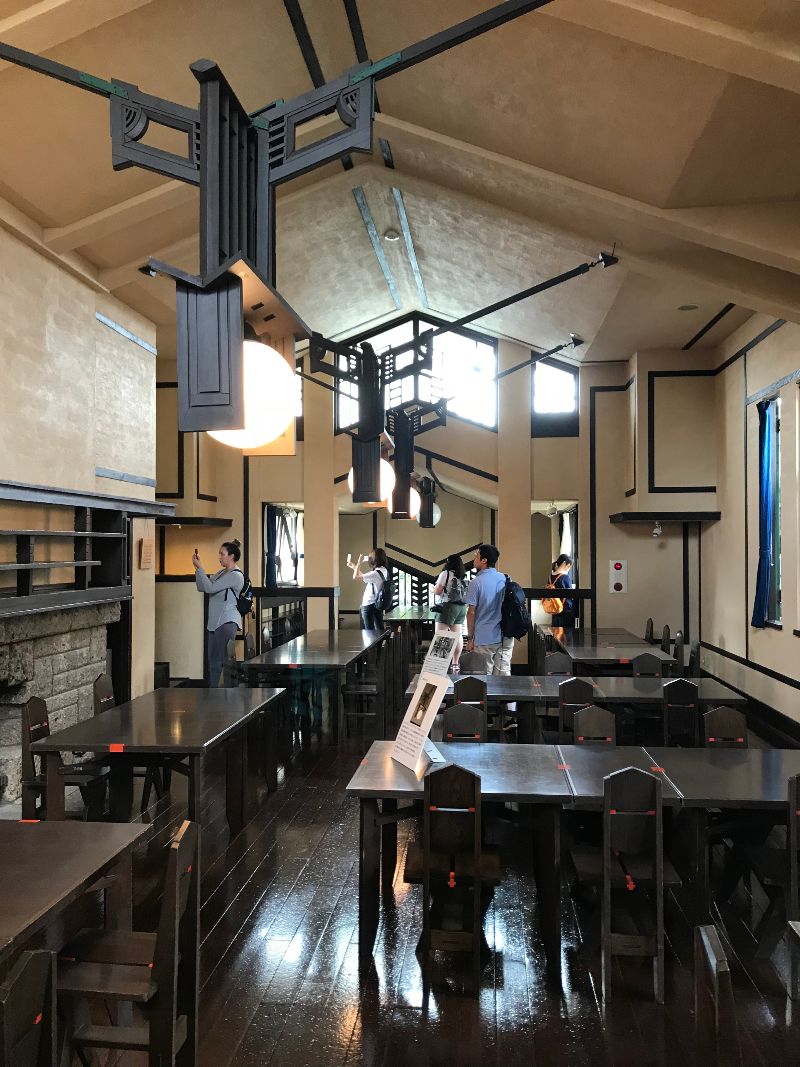Raymond Farm Center Visits Japan
John DeFazio, co-director of the Raymond Farm Center, and professor of architecture at Drexel University traveled to Japan this past September. Before conducting the 2018 Drexel University Japan Study Abroad tour for architects, interior design, and museum study students, John was joined by architect, Maki Utsunomiya, and friend of the Raymond Farm, Yuko Tashiro, in visiting many of the key Raymond architectural sites, and in meeting scholars, curators, and architects involved in the legacy of Antonin and Noémi Raymond.
Ms. Tashiro set up a tour of the Raymond’s Tokyo Women’s Christian University. The Raymonds designed the University’s master plan in 1921, and then went on to execute a series of remarkable buildings over the next eighteen years, including dormitories, a library, gymnasium, classroom buildings, and faculty residences. The Raymond's first university buildings are a fusion of their experience working for Frank Lloyd Wright and the Secessionist architecture that inspired Antonin’s student work at Prague Polytechnic Institute. Antonin cited Auguste Perret’s Notre Dame de Rainey as the model for Tokyo Women’s Christian University Chapel.
Maki Utsunomiya and Mr. Kitazawa in Karuizawa at Yoshimura Sanso, the summer house of Raymond protégé Junzo Yoshimura. Maki gleefully pointed out, “every architecture student in Japan is required to draw and build a model of it!”
Ms. Utsunomiya had graciously set an itinerary of Raymond architectural sites tour just north of Tokyo. First stop was the Italian Embassy Nikko Villa, of 1929, on Lake Chuzenji. With its distinctive cedar-bark siding, cladding it both inside and out, it was executed when Antonin had first become deeply interested in traditional Japanese vernacular architecture. Next stop was to the Raymond’s Saint Paul’s Catholic Church,1935, in Karuizawa— with its steeply sloping roof not unlike the Slovakian country buildings of Antonin’s native Bohemia and Naomi’s patterns of cut paper that is in-place of traditional stained glass, and the altar, sanctuary chairs by George Nakashima. We visited the Raymond’s Summer Studio of 1933 in Karuizawa, which is now a museum for the artist Peynet.
Ms. Utsunomiya and Mr. DeFazio were then honored to be overnight guests at the Raymonds’ New Summer Studio, of 1962. Mr. Koichi Kitazawa, founding principal of Kitazawa Architects, worked for the Raymonds in the mid-1960s and early 1970s, and now is the owner and curator of the New Studio. Mr. Kitazawa hopes to someday create a museum at the site of the New Studio, dedicated to the work of the Raymonds.
Ms. Utsunomiya and John then traveled to the Gunma Music Center, 1961. Antonin’s bold reinforced concrete folded plate structure of wall/beams allows for the Music Center's dynamic 196-foot free-span auditorium—the home to the Gunma Philharmonic Orchestra. Ms. Tashiro assisted the study tour through many sites in Tokyo, ending with a special tour of the Emperor’s Imperial Villa at Katsura, and then on to historical sites in Kyoto, Hiroshima, and Nara.
The next visit was to the Fusaichiro Inoue House,1952. Mr. Inoue requested the house to be modeled after the Raymond's own Azabu, Tokyo, home/studio of the year before. With its natural finished round hand-hewn beams, column and trusses, the Inoue house is a quintessential example a “Raymond-Style” house as it is known within Japanese architectural circles. The Inoue House stands today in the garden court of the Takasaki Museum of Art. While at Takasaki Museum, Ms. Utsunomiya and Mr. DeFazio met with the curator-director, Akiko Kasahara, and learned that the museum is planning an exhibition dedicated to the work of Antonin and Noémi Raymond in the summer of 2019.
Yuko Tashiro, arranged an extraordinary visit to the Raymond Architectural Design Offices, in Tokyo, in operation now for almost 70 years after it was reestablished with the Raymonds’ return to Japan after the Pacific War. There, we were greeted by Mr. Nakagawa, who toured Ms. Tashiro and Mr. DeFazio through the office’s gallery space filled with models, drawings, and furniture design by Noémi Raymond. On an upper level, is the Raymond Memorial Room — a section of Antonin’s office from the Raymonds’ house at Azabu, which was saved from demolition and reconstructed complete with furnishings.
Ms. Tashiro was an invaluable asset to professor DeFazio, and co-instructor Uk Chong, throughout the Drexel Study Tour— as a coordinator, interpreter and in refining the itinerary. She conducted a tour of Frank Lloyd Wright’s and Arata Endo’s remarkable Jiyu Gakuen Girls' School, of 1921, that was instrumental in introducing Modern architecture to Japan.
Ms. Tashiro assisted the study tour through many sites in Tokyo, ending with a special tour of the Emperor’s Imperial Villa at Katsura, and then on to historical sites in Kyoto, Hiroshima, and Nara.
Maki Utsunomiya joined the Drexel group, in Hiroshima and guided the day’s tour there to the Peace Dome, the Memorial Peace Museum, Cenotaph, and Hiroshima Castle.
This short trip was essential in introducing the Raymond Farm Center and its mission to those in Japan who are maintaining and building upon the legacy of Antonin and Noémi, and the contributions their proteges have made. We plan to build upon these relationships and create shared cultural programs, study residencies, and develop funding sources. As co-director of the Center, a very special thank you goes out to Maki Utsunomiya, and Yuko Tashiro for their help and advocacy for the RFC, and for reaching out for us to these key people and institutions, and helping in every step along the way.
While still in Tokyo, we were fortunate to catch the blockbuster exhibition—Japan in Architecture: Genealogies of Its Transformation, at the Mori Museum. The exhibition featured a gallery dedicated to Frank Lloyd Wright in Japan— The gallery displayed Wright’s drawings and a fragment of the Imperial Hotel, on which both Antonin and Noémi had worked, and an adjacent gallery dedicated to the work of the Raymonds (above) and their protégées, Junzo Yoshimura and Kunzo Makawa.
The principles of modern architecture
"I am one of the people who created “modern architecture.” However, I did not know I was pioneering modern architecture. I learned from the architecture of Japan and simply worked to realize the fundamental principles according to how I was enlightened. It was Japanese architecture that taught me the principles of modern architecture. — Antonin Raymond, 1953

















